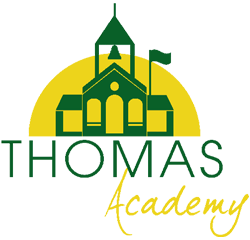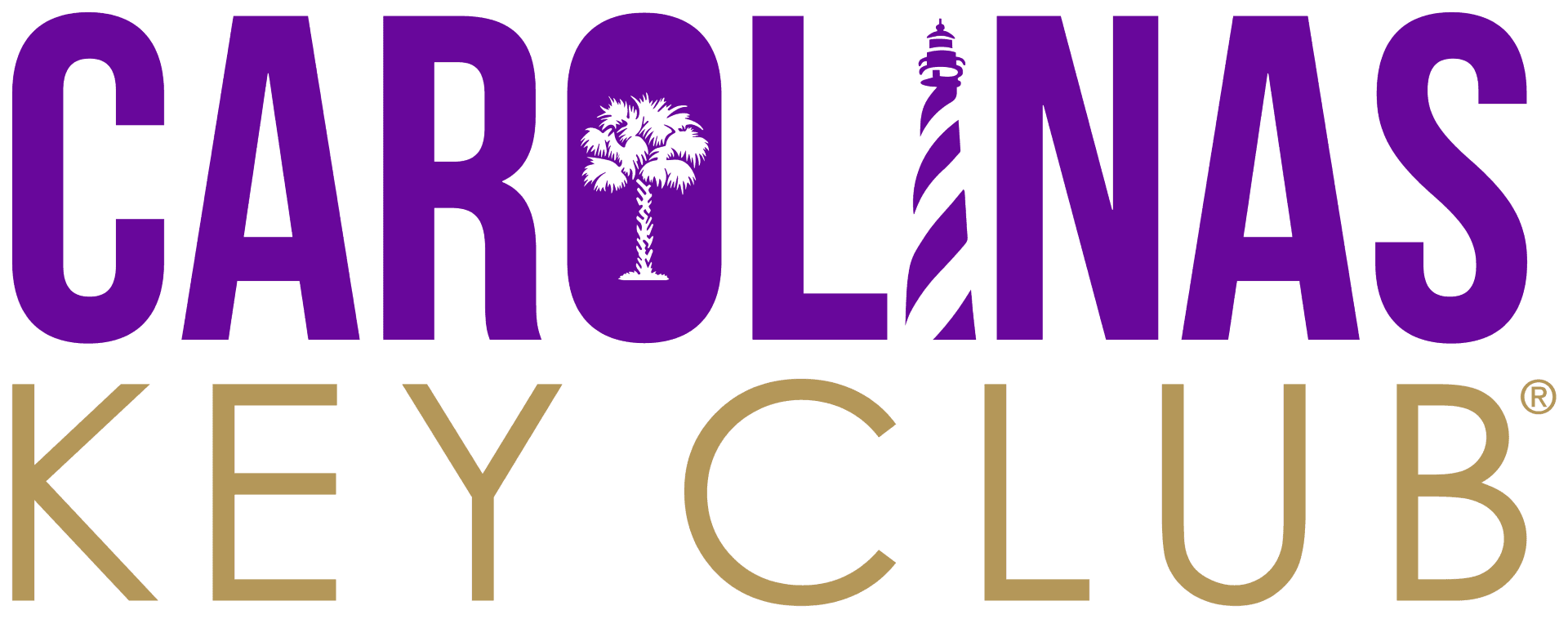Harassment Policy
Thomas Academy believes that all employees, students and their parents/families should be free of harassment and bullying as part of a safe, orderly, caring and inviting working and learning environment. The Board expressly prohibits harassment or bullying of students, employees and their parents/families, by students. Any violation of this Policy is considered a serious violation and appropriate action shall be taken in response to a violation in accordance with the Student Discipline Policy.
A. APPLICATION OF POLICY.
This Policy will apply in the following circumstances:
- While in any school building or on any school property before, during or after school hours;
- While on any bus or other vehicle as part of any school activity;
- While waiting at any bus stop;
- During any school function, extracurricular activity or school sponsored function;
- When subject to the authority of school personnel
- During any time, at any place or using any method of communication, including but not limited to electronic communications, when the behavior has a direct and immediate effect on maintaining order and discipline in the school or at a school related activity.
B. DEFINITIONS
For purposes of this Policy, the following definitions will apply:
1. “Harassment” or “Bullying”, means acts reasonably perceived as being motivated by any actual or perceived differentiating characteristic, such as race, ethnicity, ancestry, color, national origin, gender, socio-economic status, academic status, gender identity, physical appearance, sexual orientation, pregnancy, religion, age, mental, physical, developmental or sensory disability, or based on an association with a person who has or is perceived to have one or more of these characteristics, and which constitute a pattern of gestures or written, electronic or verbal communications or any physical act or any threatening communication that takes place on school property, at any school sponsored function on a school bus, or in connection with any of the other circumstances listed in section A of this Policy, and that:
a. Places a student or school employee in actual and reasonable fear of harm to his or her person or damage to his or her property;
b. Creates or is certain to create a hostile environment by substantially interfering with or impairing a student’s educational performance, opportunities, or benefits. As used in this Policy, the term “hostile environment” means that the victim subjectively views the conduct as bullying or harassment and the conduct is objectively severe or pervasive enough that a reasonable person would agree that it is bullying or harassment. Harassing or bullying behavior may include in appropriate circumstances and consistent with the definition above, but is not necessarily limited to: threats, epithets, derogatory comments or slurs, lewd propositions, assault, impeding or blocking movement, offensive touching;
c. Physical interference with normal work or movement, and visual insults, such as derogatory posters or cartoons;
d. Meets the definition of “sexual harassment” as listed below.
2. “Sexual Harassment”, when committed by a student, is conduct of a sexual nature when such conduct is sufficiently severe, persistent or pervasive so that it has the purpose or effect of substantially interfering with an employee’s work or performance, or a student’s educational performance, substantially limiting a student’s ability to participate in or benefit from an educational program or environment or creating an abusive, intimidating, hostile, or offensive work or educational environment. The terms “abusive environment”, “intimidating environment” and “offensive environment”, as used in this Policy, mean that the victim subjectively views the conduct as sexual harassment and the conduct is objectively severe or pervasive enough that a reasonable person would agree that it is sexual harassment. Sexual harassment may be between members of the same sex or members of the opposite sex.
Examples of sexually harassing conduct may include, but are not limited to the following:
- Deliberate, unwelcome touching of a sexual nature or that takes on sexual connotations;
- Suggestions or demands for sexual involvement accompanied by implied or overt promises of preferential treatment or threats;
- Continued or repeated offensive and unwanted sexual flirtations, advances, propositions or pressure for sexual activity;
- Continued, repeated and unwanted verbal remarks about an individual’s body;
- Sexually degrading words used toward an individual or to describe an individual, or the display of sexually suggestive objects or pictures; and
- The use of personal or school electronic communications to convey sexually inappropriate words, pictures or images.
C. HARASSMENT OR BULLYING COMPLAINT PROCEDURES Students, parents/guardians, school employees, volunteers, visitors or others may initiate an investigation into harassment or bullying by a student by using the procedures outlined below. (For complaints and investigations of discrimination, harassment or bullying by officials, employees, volunteers or visitors, see Prohibition of Discrimination, Harassment and Bullying by Officials, Employees, Volunteers and Visitors).
- Employees who believe or suspect that a student or employee has been harassed or bullied in violation of this Policy, shall report such information to the principal of the school in which the accused student is enrolled, using the Discrimination, Harassment, or Bullying Reporting Form online and in office. All other persons are encouraged to and should report suspected violations of this Policy to the principal of the school. Persons other than employees are not required to use the reporting form, but are encouraged to do so. A complaint or report of discrimination, harassment or bullying may be made anonymously, except that employees must sign the reporting form; however, neither the person reporting, the alleged victim nor witnesses can be promised confidentiality at the onset of an investigation due to the fact that it cannot be predicted what information will be discovered or if a hearing may result from the ultimate outcome of the investigation. (Discrimination, Harassment or Bullying Reporting Forms may be obtained in the school’s main (front) office, counselors’ office, the website at www.thomasacademync.org/PDF/ThomasAcademy2019-2020sexualharrassmentform.pdf and other locations determined by the school. A student may request assistance from a staff member to complete the reporting form if the student wishes.)
- Discrimination, Harassment, or Bullying Reporting Forms will be included in the beginning of the year packets for students and their parents/guardians.
- Once a reporting form or other report is received by school administration, the principal or designee will initiate an investigation using the Discrimination, Harassment or Bullying Incident Investigation Form within two (2) school days after receipt of a reporting form or other complaint or as timely as reasonably possible.
- The principal or designee will notify the alleged victim, or if the alleged victim is a student, the parent/guardian of the alleged victim and alleged offender and his/her parent/guardian of the complaint.
- The principal or designee shall conduct an investigation in accordance with the procedures in Student Discipline Policies, Rules and Procedures. If appropriate, the principal or designee will apply consequences and/or remedial actions consistent with due process rights using the investigatory procedures and range of listed consequences as set forth in Policy.
- If it is determined that this Policy has been violated, separate conferences with the victim, or the victim’s parents/guardians, if the victim is a student, and the offender and his/her parents/guardians, will occur within two weeks after the investigation has been completed to determine whether the harassment or bullying has continued and whether additional consequences and/or remediation need to be implemented. These conferences may occur as a part of the counseling intervention. The principal or designee will determine which school staff will conduct these conferences. This paragraph shall not apply to offending students who are under suspension or expulsion.
D. PREVENTION, INTERVENTION, REMEDIATION, AND CONSEQUENCES The Board recognizes that the prohibition of harassment and bullying in schools and wrongful reprisal or retaliation against individuals who report acts of harassment or bullying, as well as subsequent and standard consequences and remedial actions, cannot be effective as prevention and intervention methods unless they are included as a part of a whole-school prevention/intervention program. Prevention will include:
- Annual professional development for administrators and staff to review classroom management strategies to reduce negative behaviors;
- Classroom guidance lessons; and
- Anti-bullying and anti-harassment programs. Intervention/Remediation will include:
- Annual professional development to review policy and procedures for reporting harassment and bullying;
- Education/intervention for the students exhibiting harassing or bullying behaviors will include teaching replacement behaviors, empathy, tolerance and sensitivity to diversity;
- A continuum of interventions to prevent the harassing or bullying behavior from continuing to occur;
- Utilizing student support staff members to provide additional assistance. Consequences and remedial actions for students committing acts of harassment or bullying and for persons engaged in prohibited reprisal or retaliation should be consistently and fairly applied after an appropriate investigation has determined that such an offense has occurred. The following is a list of consequences and remedial actions and is presented in no particular order, nor does it limit the imposition of other or additional disciplinary or remedial actions: Standard Consequences
- Time out;
- Loss of a privilege;
- Verbal reprimand;
- Parental notification;
- Written letter of apology to victim (after review by staff);
- In-school suspension;
- Out-of-school suspension;
- Long-term suspension; and/or
- Expulsion. Remedial Actions
- Parent/student conference;
- Counseling with behavior specialist or other in-school support staff;
- Behavioral contract; and/or
- Positive behavioral supports (i.e. functional behavioral assessment or behavior intervention plan). Students who are entitled to the protections of the Individuals with Disabilities Education Improvement Act of 2004, as amended, or Section 504 of the Rehabilitation Act of 1973 shall be entitled to those protections even when found to have committed an act of harassment or bullying.
E. NON-RETALIATION
The Board prohibits reprisal or retaliation against any person who reports an act of harassment or bullying, except where the person knew or had reason to believe that the report was false. The consequence and appropriate remedial action for a person who engages in wrongful reprisal or retaliation shall be determined by the appropriate administrator, after consideration of the nature and circumstances of the act, in accordance with applicable federal, state or local laws, policies and regulations.
F. TRAINING AND PROGRAMS
The Principal or designee shall designate an employee(s) to participate in training by the Department of Public Instruction pertaining to anti-harassment and anti-bullying. The designee will provide leadership and training in the school system regarding this Policy and state requirements. As funds are available, the Principal will provide additional training for students and staff regarding the Board’s Policy on harassment and bullying and will create programs to address these issues. The Principal or designee will ensure that any training or programs provided will include indentifying groups that may be the target of harassment or bullying; identifying places at which such behavior may occur including within school buildings or property, at school bus stops, via the internet, etc., and providing clear examples of behavior that constitutes harassment or bullying.
G. NOTICE
The Principal or designee is responsible for providing effective notice to students, parents/guardians and employees of the procedures for reporting and investigating complaints of harassment or bullying by students. The dissemination of such information may be completed using the following techniques, as well as through others that may not be listed:
• Student handbooks issued at the beginning of the school year;
• School website (thomasacademync.org);
H. COORDINATORS
The Superintendent or designee will publish the names, addresses and phone numbers of the “Title IX Coordinator” (for sex discrimination), “Section 504 Coordinator” (for discrimination on the basis of disability) and the “ADA Coordinator” (also for discrimination on the basis of disability) in a manner intended to ensure that employees, applicants, students, parents/guardians and other individuals who participate in the school system’s program are aware of the coordinators. The purpose of the coordinator positions is to provide additional protection of non-harassment and non-bullying rights. The coordinator either must (1) implement a resolution to harassment or bullying complaint, to the extent a resolution can be reached and the coordinator has the authority to implement corrective action or (2) notify the Principal or designee that intervention by other school officials is required to resolve the situation.
I. RECORDS AND REPORTING
The Principal or designee shall maintain confidential records of complaint or reports of harassment and bullying which identify the names of any individuals accused and the resolution of such reports or complaints. The Principal also shall maintain records of training, corrective action or other steps taken by the system to help provide an environment free of harassment and bullying. The Principal or designee shall report to the Thomas Academy Board all verified cases of harassment or bullying. The report will be made through the Discipline Data Collection Report or through other means required by the Thomas Academy Board.
J. DIGNITY AND WORTH
The Thomas Academy Board is committed to promoting the worth and dignity of all individuals regardless of race, ethnicity, ancestry, color, religion, national origin, gender, socio-economic status, gender identity, physical appearance, sexual orientation, age or mental, physical, developmental or sensory disability. The Board directs the Principal or designee to establish training and other programs to help eliminate harassment and bullying and to foster an environment of understanding and respect for all individuals.
K. EVALUATIONS
The Principal or designee is required to evaluate the effectiveness of efforts to correct or prevent harassment and bullying and will share these evaluations periodically with the Board.
L. CIVIL LIABILITY
This Policy is intended to provide guidance as to disciplinary action that shall or may be taken against students for violations of this Policy. This Policy is not intended to and shall not provide a basis for a civil cause of action or damages against the Board, its members, agents or employees, in favor of a victim of harassment or bullying. Any cause of action or right to damages in favor of a victim of harassment or bullying shall be as specified by applicable federal and/or state law. LEGAL REFS: Title VI of the Civil Rights Act of 1964, 42 U.S.C. 2000d et.seq., 34 CFR. pt.100; Title VII of the Civil Rights Act of 1964, 42 USC. 2000e et. seq., 29 CFR pt. 1604; Title IX of the Education Amendments of 1972, 20 USC §1681 et. seq., 34 CFR pt. 106; Age Discrimination in Employment Act of 1967, 29 USC 621 et. seq.; The Rehabilitation Act of 1973, 29 USC 705(20), 794, 34 CFR pt. 104; Americans With Disabilities Act, 42 USC 12101 et. seq., 34 CFR pt. 35; Revised Sexual Harassment Guidance: Harassment of Students by School Employees, other Students, or Third Parties, US Department of Education, Office for Civil Rights (2001); Racial Incidents and Harassment Against Students at Educational Institutions, Investigative Guidance, US Department of Education, Office for Civil Rights (1994); Oncale v. Sundowner Offshore Services, 523 US 75 (1998); NCGS §115C-335.5, NCGS §115C-407.9 through 407.12, NCGS §-126-16; State Board of Education Policy HRS-A-007 CROSS REFS: Policy 9510 Parent/Public Complaints, Policy 8410 Student Discipline, Policies, Rules and Procedures, Policy 6445 Prohibition Against Discrimination, Harassment and Bullying by Officials, Employees, Volunteers and Visitors Adopted: 04/04/05 Revised: 03/02/10, 04/05/11.











